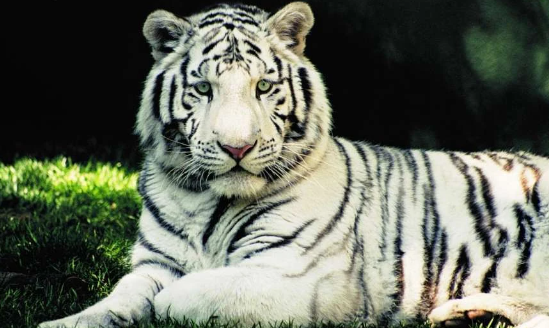The Fascinating World of White Bengal Tigers
White Bengal tigers, with their striking appearance and charismatic charm, capture the hearts of many. These stunning creatures not only symbolize beauty but also raise important conversations about conservation efforts and species preservation. Understanding more about these majestic animals is essential for their protection and the ecosystems they inhabit.
Unique Characteristics of White Bengal Tigers
White Bengal tigers are not a separate subspecies but rather a genetic variation of the Bengal tiger. Their distinctive white fur is the result of a recessive gene, which also contributes to their blue eyes. Unlike their orange-hued relatives, these tigers maintain the same behavioral traits and habitats. Typically larger than the average tiger, white Bengals can weigh up to 500 pounds and stretch as long as ten feet. Their unique coloring gives them a certain allure but also makes them vulnerable in the wild, where they might be less effective at hunting.
Conservation Status and Challenges
Despite their striking looks, the conservation status of White Bengal tigers is concerning. While they are often depicted in zoos and sanctuaries, their existence is challenged by poaching and habitat loss. Wildlife organizations estimate that there are fewer than 2,500 Bengal tigers left in the wild, and white tigers are considered even rarer due to their genetic mutations. Conservation efforts include intensive breeding programs and habitat preservation, aimed at maintaining genetic diversity and preventing extinction. However, the allure of white tigers in captivity can sometimes overshadow the need for more sustainable, ethical practices in their management.
The Role of White Bengal Tigers in Cultural Representation
White Bengal tigers have a significant presence in various cultures, often symbolizing strength, beauty, and majesty. They appear in folklore, artwork, and literature, making them icons beyond their natural habitats. In modern media, white tigers are frequently showcased in films and commercials, further embedding them in popular culture. However, this representation can sometimes lead to misconceptions about their behavioral patterns and needs. It’s crucial to approach these fascinating animals with respect and awareness of their status in the wild, recognizing both their beauty and the challenges they face.
Conclusion
White Bengal tigers are not just beautiful creatures; they are a symbol of the challenges that many wildlife species face today. By learning about their characteristics, conservation status, and cultural significance, we can contribute to their preservation. Explore more about these majestic animals and consider supporting conservation efforts to ensure that future generations can witness the beauty of white Bengal tigers in nature. Together, we can make a difference!

